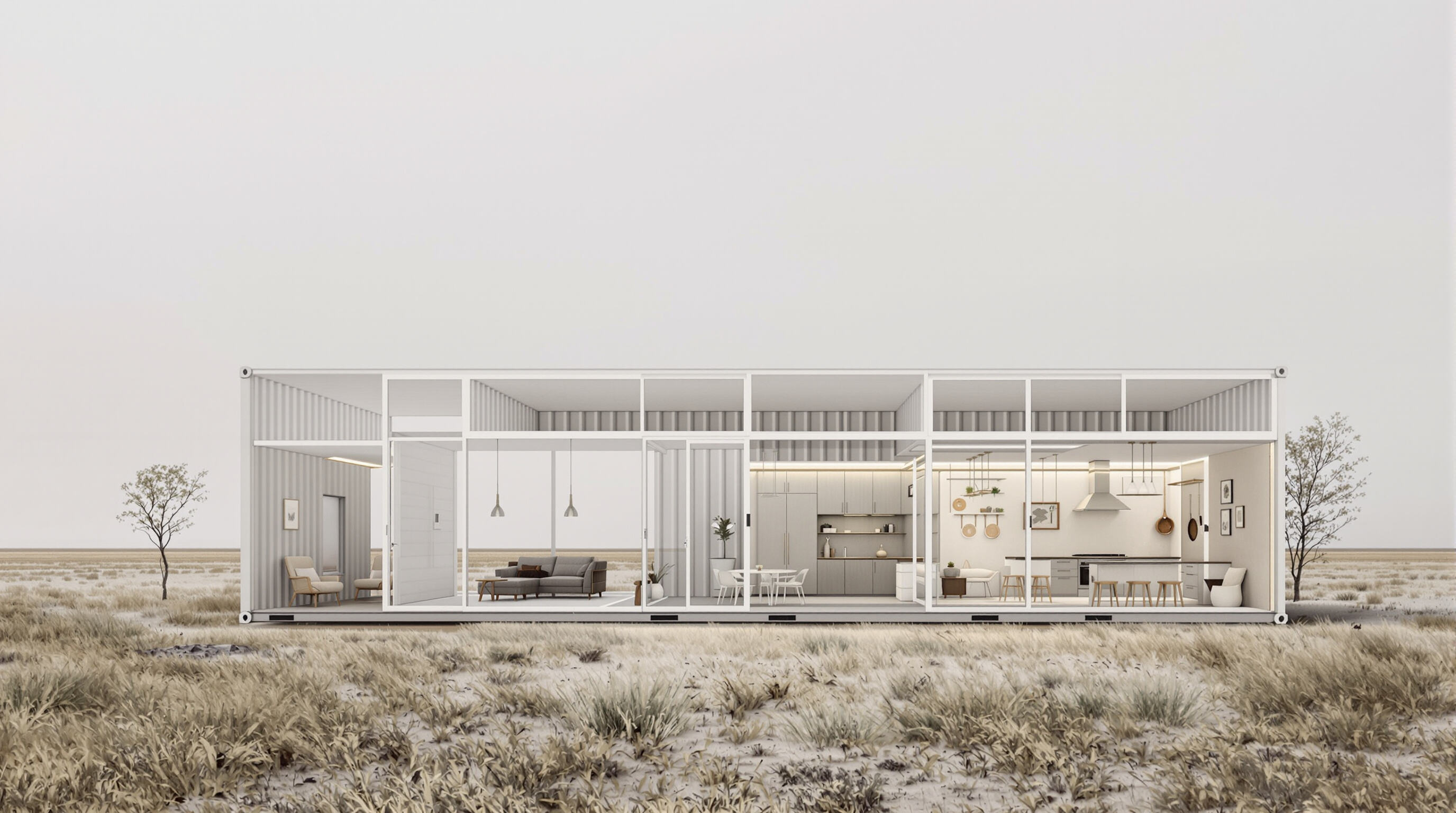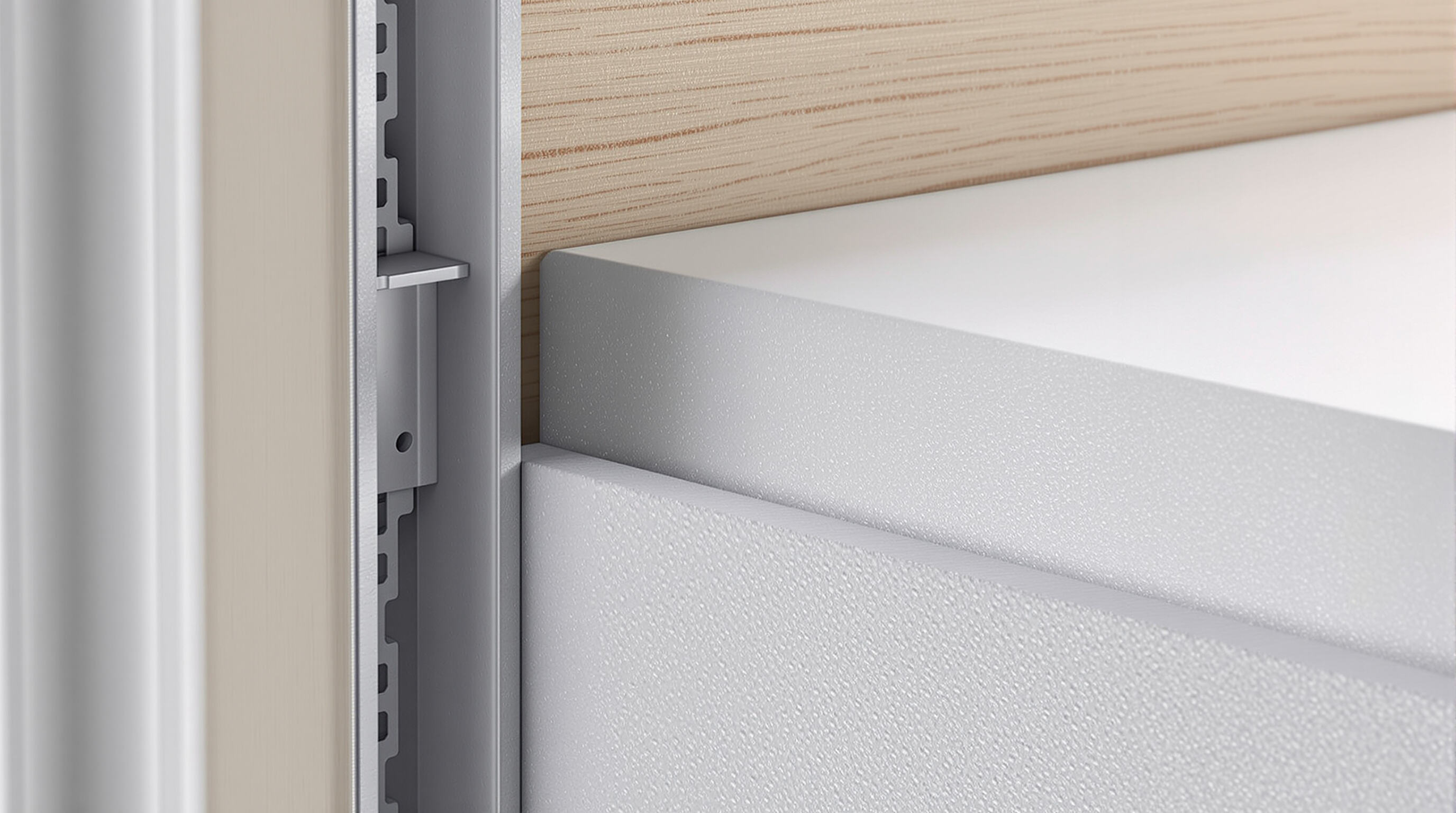Why Insulation Is Critical for Container Houses
Thermal Conductivity of Steel in Container Houses
Steel actually transfers heat around 300 to 400 times faster than wood does, which means container homes without proper insulation tend to experience wild temperature swings pretty quickly. When these metal walls sit in direct sun, temperatures inside can skyrocket to about 140 degrees Fahrenheit or even 60 Celsius according to some studies from Building Science Corporation back in 2023. The heating and cooling systems have no choice but to compensate for all this extra warmth, working roughly 60 percent harder compared to what we see in regular wooden houses. As a result, people living in these converted containers often deal with uncomfortable temperature fluctuations throughout the day while also facing much higher electricity bills because their HVAC equipment runs constantly trying to maintain stable conditions inside.
Condensation and Thermal Bridging Risks in Metal Structures
When there's a temperature difference between the air inside a building and steel surfaces, condensation becomes a problem. We're talking about something as small as a 10 degree Fahrenheit (or around 5.5 Celsius) difference that can actually create about 1.2 liters of moisture on every 100 square feet of surface area each day. All this extra moisture doesn't just sit there it starts eating away at materials and makes conditions perfect for mold to grow. And then there's the issue with thermal bridging through metal frames which cuts down how well insulation works by roughly 40 percent. What does this mean? Cold spots start appearing right where we'd expect warmth, even when proper insulation has been installed.
Benefits of Insulating Container Houses for Energy Efficiency and Climate Control
Proper insulation delivers measurable improvements:
- 52% average reduction in heating and cooling costs (DOE, 2023)
- Air tightness achieving <0.5 ACH (Air Changes per Hour)
- Effective condensation control using vapor barriers and breathable materials
- Stable indoor temperatures across extreme ranges, from -40°F to 120°F (-40°C to 49°C)
These benefits enable shipping containers to meet building codes and function as durable, energy-efficient living spaces with reliable climate performance.
Interior vs. Exterior Insulation: Choosing the Right Approach for Container Houses

Placement of Insulation: Interior vs. Exterior Trade-offs
When deciding on insulation for containers, there's a tradeoff between energy savings and available space inside. Putting insulation on the inside keeps that raw industrial appearance many people want, though it eats away at floor space. Each wall loses around 3 to 6 inches of depth, which adds up to roughly 27 square feet missing from a regular sized 40 foot container. On the flip side, going with exterior insulation means adding some sort of weatherproof covering, but this approach leaves all the interior measurements intact as they were originally designed. According to recent studies published by the Building Enclosure Council back in 2024, containers with exterior insulation actually stop about two thirds more heat escaping compared to just insulating from within when talking about steel structures specifically.
Exterior Insulation Benefits for Container Homes Including Thermal Bridge Reduction
Putting insulation on the outside creates what builders call a continuous thermal barrier around buildings, cutting down those pesky heat leaks through framing by somewhere around 70%. The rigid foam stuff, especially polyiso boards, gives us pretty good R values between 5 and 6.5 per inch thick. These panels also protect steel parts from all that temperature fluctuation which helps keep the whole building standing strong over time. What makes exterior insulation better than putting it inside? Well, when we install it on the outside, those metal beams stay inside where the climate is controlled. That simple fact means much less chance of moisture collecting and causing problems down the road.
Interior Insulation Challenges With Space Loss and Vapor Permeability
Putting insulation inside buildings takes away valuable living area and creates bigger problems with managing moisture. When fiberglass batts sit against cold steel walls, they tend to hold onto humidity which makes things worse. Studies show this setup can actually boost corrosion rates by about 80% or so in areas where it gets really damp, according to research from ASHRAE back in 2023. But wait there's a catch if we want to avoid all that damage we need to add something else like closed cell foam or install good vapor barriers. Because of these tricky issues, many builders end up going with exterior insulation instead. It just lasts longer overall and performs better in most situations despite what some might think about aesthetics versus function.
How to Prevent Thermal Bridging in Container House Structures

Understanding Thermal Bridging in Metal C-Channel Beams of Container Houses
When steel framing like those C-channel beams and corrugated walls (which can conduct heat at rates over 45 W/m·K according to Ponemon's research from 2023) forms direct pathways for heat movement, that's what we call thermal bridging. Steel components actually make up around 30% of all heat losses in buildings without proper insulation. And get this - they're behind about 60% of the thermal bridging issues found specifically in container homes. What happens next? Cold spots develop on these surfaces, leading to condensation problems and eventually mold growth. This isn't just unsightly either. It really messes with indoor air quality and can shorten how long the building lasts before needing major repairs.
Strategies to Break Thermal Bridges Using Continuous Exterior Insulation
When we apply continuous exterior insulation like rigid polyisocyanurate foam, it basically creates a thermal blanket around the whole container. This helps keep the steel separated from harsh outdoor weather conditions. The results are pretty impressive too, with insulation ratings between R-20 and R-30, which cuts down on thermal bridging by about 80% when compared to just filling cavities. A recent study from the Building Enclosure field in 2024 found something interesting: panels that stick using adhesives actually cut heat transfer by 23% more than those held with mechanical fasteners. What makes this system really work well is how it moves the dew point beyond the wall itself, stopping moisture from building up inside where it shouldn't be. We've seen this confirmed through various controlled humidity experiments over time.
Case Study: Full-Wrap Rigid Foam Reducing Heat Transfer by 40%
Researchers looked at 62 container homes over twelve months and discovered something interesting about insulation. When they added a 4 inch thick exterior foam layer, it cut down on thermal bridging problems by around 40 percent. That translated into about 1,200 fewer kilowatt hours used each year for heating and cooling systems. Inside the homes, temperature fluctuations stayed pretty consistent throughout the day, only changing about 1.5 degrees Fahrenheit compared to the 6 degree swings seen in containers without proper insulation. Best part? No one had any mold issues during those first two winter seasons either. Putting together R-30 material on the outside with R-13 on the inside walls gave these homes an overall insulation rating of R-43. For folks building in colder climates, this beats what ASHRAE recommends for Zone 5 by almost a fifth, which means builders can save money without sacrificing comfort.
Key outcomes of continuous exterior insulation:
- Heating costs reduced by $580 annually (based on 2023 Energy Dept. benchmarks)
- Thermal bridge-related energy loss dropped below 8% (from 25–35%)
- 92% occupant satisfaction for consistent comfort
This strategy is endorsed by 83% of architects in a 2024 prefab housing survey as the most effective way to balance energy efficiency, durability, and space efficiency.
Climate-Specific Insulation Strategies for Container Houses
R-Value Requirements by Climate Zone for Optimal Performance
Insulation needs vary significantly by region. The 2024 Building Envelope Study outlines minimum standards:
| Climate Zone | Minimum R-Value (Walls) | Critical Focus Area |
|---|---|---|
| Cold (Zone 6-7) | R-25+ | Roof/wall joints, slab foundations |
| Mixed-Humid | R-15 | Thermal bridging at corners |
| Hot-Arid | R-10 | Solar reflectance >80% |
For example, upgrading from R-12 to R-21 mineral wool in Yanqing, China, cut heating loads by 34% during the 2022 Winter Olympics (Tong et al., 2022).
Cold Climates: Prioritizing High R-Value and Air Leakage Control
When dealing with temperatures below freezing, getting at least R-25 continuous insulation along with good air sealing can cut energy costs by around 40% according to research from ScienceDirect back in 2024. Closed cell spray foam works really well for this kind of work since it fills those tiny gaps down to about half a millimeter and gives roughly R-6.5 for each inch applied. Containers that have been retrofitted often benefit from blown in cellulose instead which rates around R-3.8 per inch. This material helps prevent heat loss through those tricky spots where standard batt insulation just doesn't fit right, something many contractors run into when working on older buildings or repurposed structures.
Hot-Humid Climates: Managing Vapor Permeability and Condensation
According to the 2022 HVAC Load Analysis, breathable insulation with a permeance of ≤1 perm reduces condensation risk by 57% in tropical regions. Recommended strategies include:
- Vapor-open assemblies: Use mineral wool (16 perms) behind exterior rain screens to allow drying
- Radiant barriers: Reflect up to 97% of solar radiation when installed with a 1-inch air gap
- Dehumidification prep: Keep AC ducts within conditioned spaces to prevent condensation
Pro tip: In high-humidity locations like Miami (90°F, 80% RH), orient windows for cross-ventilation and insulate east and west walls with R-12 foam boards to block intense morning and afternoon sun.
FAQ
Why is insulation important for container houses?
Insulation is critical in container houses to manage temperature fluctuations due to steel's high thermal conductivity, which leads to increased heating and cooling costs. Proper insulation also helps in controlling condensation and preventing mold growth.
What are some effective insulation materials for container homes?
Some effective insulation materials include spray foam with high R-values, rigid foam panels for moisture resistance, and mineral wool for fire resistance and vapor diffusion.
Should I choose interior or exterior insulation for my container house?
Exterior insulation is often preferred as it maintains interior space, prevents condensation on steel surfaces, and provides a continuous thermal barrier. Interior insulation, while preserving the industrial look, may reduce living space and require additional moisture control measures.
What strategies are recommended to prevent thermal bridging in container homes?
Using continuous exterior insulation like rigid foam creates a thermal blanket that prevents heat transfer through C-channel beams, significantly reducing thermal bridging.
How should insulation strategies vary based on climate?
Insulation strategies should complement the climate: high R-value and air sealing for cold zones, while moisture permeability management is crucial in hot-humid areas to avoid condensation.
Table of Contents
- Why Insulation Is Critical for Container Houses
- Interior vs. Exterior Insulation: Choosing the Right Approach for Container Houses
- How to Prevent Thermal Bridging in Container House Structures
- Climate-Specific Insulation Strategies for Container Houses
-
FAQ
- Why is insulation important for container houses?
- What are some effective insulation materials for container homes?
- Should I choose interior or exterior insulation for my container house?
- What strategies are recommended to prevent thermal bridging in container homes?
- How should insulation strategies vary based on climate?


